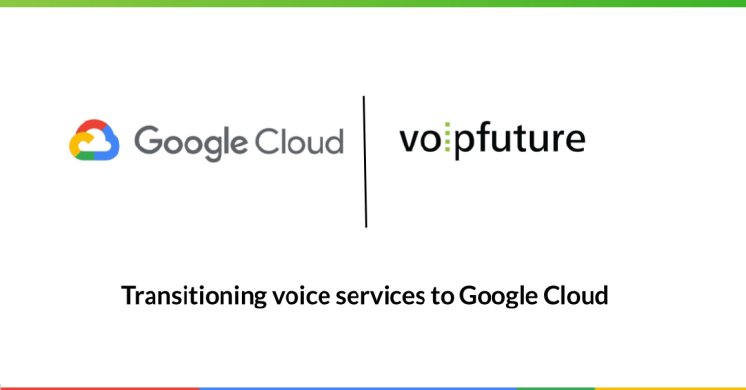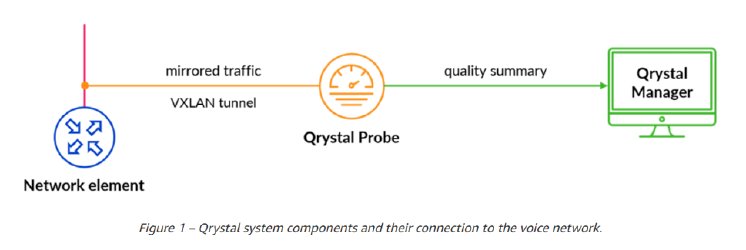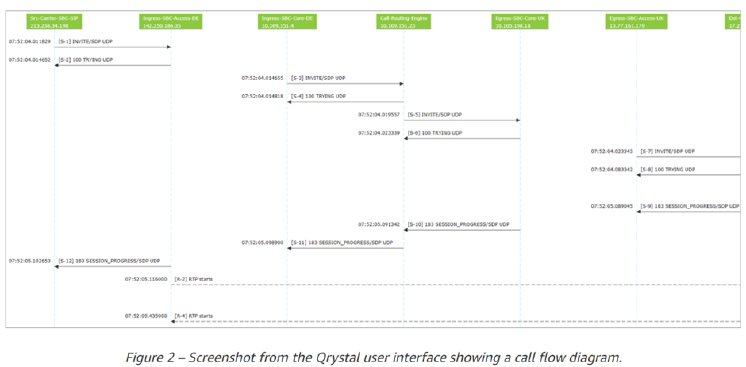Secondly, the cloud offers improved reliability and availability. For example, Google Cloud operates data centers across multiple geographic regions, ensuring redundancy and fault tolerance. Communication service providers can leverage this distributed architecture to enhance their service reliability, minimizing downtime and disruptions. Additionally, cloud platforms offer robust backup and disaster recovery mechanisms, protecting voice services against data loss or system failures.
In essence, cloud services allow service providers to focus on delivering a superior customer experience. To this end, it is essential that voice service providers also understand and control the actual user experience. This requires visibility into the network, which used to be one of the biggest challenges in delivering an exceptional customer experience. For on-prem deployments this involved installing physical taps and aggregators and rolling out expensive hardware to all sites – in short: visibility in conventional on-prem deployments required large investments and a lot of time.
The flexibility of the cloud can actually help to improve visibility. Voipfuture, a Google Cloud partner, offers Qrystal for Google Cloud—a platform that enhances visibility into your voice services. In this article, we will explore the current difficulties in monitoring voice call quality and demonstrate how Qrystal for Google Cloud can enrich visibility within your critical communication infrastructure.
Time to Rethink Voice Monitoring
Migrating voice services to the cloud is undoubtedly a wise choice for voice service providers. There are however complexities involved in the transition process. One particular challenge lies in having to rethink your monitoring strategy for the voice service. Since existing on-prem gear needs to be replaced with a new cloud-based system, there is an opportunity to greatly improve visibility.
Conventional monitoring systems provide detailed information on call signaling, but neglect the network performance and the in-call quality. Metrics relevant to the in-call user experience such as MOS, jitter, loss and other metrics are often presented as average of averages of calls with variable duration – this approach only shows a measurable impact, for truly catastrophic network failures. Access to reliable, accurate, and actionable data becomes crucial in maintaining service quality and delivering a user experience that aligns with customer expectations.
By harnessing high-quality data on both the control and media plane, communication service providers can comprehensively monitor performance, swiftly identify the root causes of any issues, and optimize the user experience. Practical voice monitoring data offers profound data-based insights and valuable information that yield tangible results, such as reducing mean time to repair (MTTR). This, in turn, enhances service quality, streamlines service management, and improves operational efficiency, leading to potential cost savings.
Dual visibility in Google Cloud
Migrating your voice service to Google Cloud opens up an excellent chance to improve voice service performance and user experience. Google Cloud, in collaboration with Voipfuture, offers the perfect solution for maintaining call quality throughout the entire service lifecycle. This is achieved through the implementation of Qrystal for Google Cloud, a comprehensive monitoring solution that offers the following capabilities:
1. Analyze all call-related traffic within the Google Cloud environment, and if necessary, even extend its analysis to on-premises infrastructure.
2. Automatically detect and identify issues such as dropped calls or instances of silent calls.
3. Provide accurate and rapid root cause analysis, enabling swift resolution of any identified problems.
4. Aggregate data to generate valuable statistics and Key Performance Indicators (KPIs), facilitating informed decision-making.
5. Ensure a superior user experience that aligns with customer expectations by maintaining high service quality.
By utilizing Qrystal for Google Cloud, you can seamlessly transition your voice service to Google Cloud, while ensuring optimal call quality and meeting your customers’ expectations.
Qrystal for Google Cloud data offers a genuine representation of the end-user experience, empowering communication service providers to maintain control over their final product while leveraging the multitude of advantages provided by Google Cloud.
For example, by feeding Qrystal’s accurate data into the data lake and correlating it with other data sources, communication service providers can take a huge step forward towards the goal of zero-touch operations. Automatically linking degradations, e.g. of the in-call quality, to events from other data sources such as log files, weather data or traffic data, allows to precisely pin-point root causes of past issues. Taking a step further AI/ML models can even be trained to predict necessary service adaptations preventing potential future issues.
Voipfuture provides analytics services that deliver precise data on standard voice services and networks, meticulously analyzing each packet of every call to assess connectivity and media quality. This comprehensive data enables in-depth analysis of cloud voice services, enhancing operational efficiency, establishing authentic benchmarks (user experience KPIs) to attract new customers, and facilitating immediate issue detection.
Qrystal for Google Cloud excels in providing high temporal detail through time-slicing, following the guidelines of ETSI TR 103 639. This time-slicing capability unlocks numerous possibilities for aggregating data and generating effective media KPIs that accurately reflect the perceived call quality experienced by end users.
Serving as a passive mid-point monitoring solution for SIP/RTP-based real-time communication services, Qrystal for Google Cloud comprises distributed Qrystal Probes and the central Qrystal Manager.
The Qrystal components can be deployed fully on Google Cloud or in a hybrid manner. For example, Qrystal Probes can be deployed on-premise and the central Qrystal Manager can be deployed on Google Cloud.
Central Qrystal Manager
At the core of the solution lies the central Qrystal Manager, which provides a one-stop-shop for accurate data:
1. Its primary function is to gather all metric data from the distributed Qrystal Probes for subsequent post-processing, correlation, and aggregation. Key Performance Indicators (KPIs), quality-enriched Call Detail Records (CDRs), and other pertinent data are stored within a carrier-grade data warehouse.
2. It offers an extensive array of analytics and troubleshooting capabilities, empowering effective voice service monitoring and fault alarming. Additionally, it provides a wide range of interfaces for seamless integration with OSS/BSS applications, ensuring smooth interoperability
Qrystal comprehensively covers all facets of voice quality assurance. This includes registration monitoring, call monitoring, comprehensive reporting, quality-enhanced CDRs, detailed call flow diagrams, advanced alarming features, a highly flexible call search functionality, automated indicators, customizable dashboards, and much more.
Distributed Qrystal Probes
Distributed Qrystal Probes play a crucial role in assessing the characteristics of signaling and media streams across multiple network points:
1. They perform real-time analysis of SIP, RTP, and RTCP packets on a specific link, generating unique metrics that can be further processed by the Qrystal Manager.
2. At a monitoring point, the Qrystal Probes meticulously analyze call-related SIP signaling, which is then summarized and presented as xDRs. The probe stores SIP messages, allowing for their display in call flow diagrams, providing valuable insights into the call flow.
3. Quality data records (QDRs) are created through Voipfuture’s patented fixed time-slicing technology. These records condense statistical information related to every five-second segment of an RTP stream. Within each QDR, several hundred values, ratios, KPIs, and automatic root cause indicators are stored, offering a comprehensive overview of the call quality.
4. The Probes support intelligent packet recording, enabling the creation of traces for individual calls or trunks, facilitating detailed analysis and troubleshooting when necessary.
Qrystal for Google Cloud has been meticulously crafted as a comprehensive vertical solution, providing vital business-critical information to all departments within an organization. It offers a wide range of statistics and detailed call-level data, delivering essential insights to various teams, including: Network operations and troubleshooting; customer experience management; network and service performance optimization; and marketing.
Time for a Change
Communication service providers can unlock the advantages of deploying voice services on Google Cloud with Voipfuture’s Qrystal for Google Cloud, guaranteeing complete visibility and delivering a high-quality service. This enables swift, secure, and flexible cloud voice service deployments that meet customer expectations for an exceptional user experience.
In close collaboration, Google Cloud and Voipfuture ensure that service providers migrating to Google Cloud can fully leverage the operational efficiency and flexibility of the cloud without compromising on visibility. Quite the opposite: by reconsidering the monitoring strategy and putting a greater focus on in-call quality user satisfaction can be greatly improved. With Google Cloud, the process of deploying and testing new monitoring setups becomes quick and effortless.
Qrystal for Google Cloud stands as a carrier-grade and vendor-agnostic solution, providing a proven assurance platform for voice services on Google Cloud Platform. Qrystal delivers accurate and actionable data that is an essential data source for the future of AI/ML-assisted zero-touch operations.




